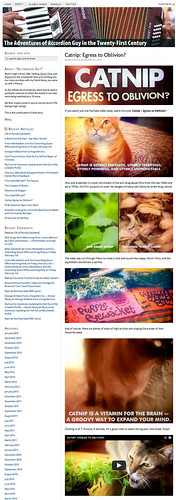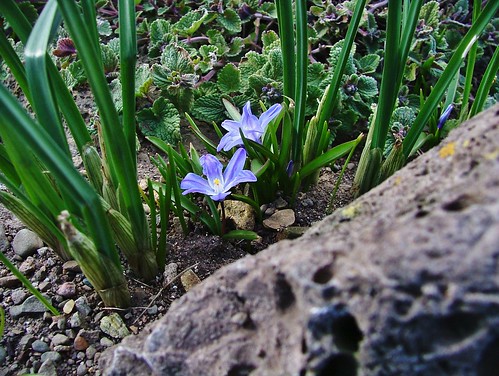Cat food can be classified into dry, moist, and semi-moist foods. Each one has its advantages, and Ragdolls need discrete kinds of food at separate stages. Kittens need on the whole breast milk and moist food, while adults require more protein and dry food. Pregnant Ragdolls have special dietary needs that change all straight through the fertilization as well.
 [b]Catnip[/b]
[b]Catnip[/b]
Ragdoll kittens ought to be only breastfed for the first four to five weeks. Cat milk includes all the nutrients vital for the kitten's growth, together with antibodies that help preclude disease. Breast milk also passes on other antibodies that the mom produced to fight previous diseases.

More food ought to be supplied after four to five weeks, as the kitten requires more nutrients to withhold its fast growth. Initial food ought to be easy to digest. Mix canned food with warm water or kitten transfer milk until it constitutes a loose paste. Do Not use regular cow's milk this is too heavy for kittens and could cause in indigestion.
Dry food
After an additional one four to five weeks, your kitten should be ready for dry food. To make the change easier, moisten dry food with a diminutive warm water in the first few feedings. It's also vital to choose high-quality supplements to dry food and some of the good brands are Iams®, Science Diet®, and Nutro Kitten®. Science Diet Feline Growth® is popular among Ragdoll kittens. Supplements can be provided twice a day with morning and evening feeding. You can switch to adult food after roughly 12 months.
Choosing and establishment kitten food
Ragdoll kittens have fragile stomachs, so take extra care in choosing kitten food. Food should all the time be warm or slightly above room temperature. Discard all food that has been left out for more than 30 minutes, especially in the summer. Bacteria grows fast in warm, wet foods and may maybe upset your kitten's stomach, or even lead to food poisoning. To stop wasting food, just survey how much your kitten eats at a time so you know how much to put in order per feeding.
House flies can unquestionably contaminate kitten food, so keep your feeding area as fly-proof as possible. Wash the feeding bowl daily with hot, soapy water and replace water in the drinking bowl any times a day. Wash the drinking bowl at the same time and refill with fresh water.
Table scraps can be given occasionally, but don't make regular meals out of them. Cooked human foods do not comprise the nutrients vital for your kitten's growth. Generic cat food from groceries are better, but Stellarhart recommends high-quality foods from specialty pet stores. Also, cats don't like the smell of plastic and metal containers, so use only glass drinking bowls.
Dry vs wet foods
Dry foods are ordinarily great for your Ragdoll, except in the breastfeeding and Initial stage. They work your kitten's chewing muscles and help keep the teeth white. Dry food consists in the main of meat and vegetables, and can be moistened or served dry. Serving them dry allows your cat to nibble throughout the day, rather than eating one large meal at a time. Dry food ought to comprise about 9 to 10% moisture, 8% fat, and 30% protein.
Moist food contains about 75% moisture and equal amounts of fat and protein. Not all moist foods are the same some are all-meat or all-fish, while others are a mix of meat and vegetables. The previous should not be used for regular meals, as your cat can get addicted and refuse to eat other foods. The small treat cans of range foods are regularly all-meat or all-fish. As with kitten food, moist foods ought to be warmed to room climatic characteristic before serving.
Semi-moist food has about 35% water, 27% protein, and 7% fat. Most of them are nutritionally balanced, very tasty, and can be left out for nibbling, but they spoil quicker than dry food.
Kitten treats
Occasional kitten treats will not harm your kitten, but take care not to fill them up so they can still eat regular meals. Treats ought to not supply any more than 10% of your kitten's daily caloric intake. Look for hard chew treats to help heighten your kitten's dental health
B. Feeding Ragdoll Adults
Ragdolls are not very active, so they gain weight faster than other cats. Do not let them come to be obese supply them only 70 calories per kilogram of body weight. A lot of what population believe to be cats' favourite foods are unquestionably harmful. Here are some of the most base cat food myths:
Fish
Fish may be good for cats, but it can't cover all their nutritional needs, and too much of the same nutrients can be harmful. Tuna is rich in polyunsaturated fatty acids, which need vitamin E to break them down. Too much tuna in your cat's diet can cause yellow fat disease (steatitis).
Milk
Milk is rich in water and carbohydrates, but many cats are lactose intolerant and get digestive problems a few hours after drinking milk. regular cow's milk can cause diarrhoea and loose stools, which can lead to malnutrition and dehydration. If your cat likes milk, use transfer cat milk instead.
Catnip
Cats love the smell of catnip leaves, but it can cause short-term behavioural changes. Catnip is a hallucinogen and may maybe put your cat in a state of near delirium. Some effects comprise rolling, rubbing, chasing phantom mice, or simply staring into space. Although it's not addictive, catnip has no place in your cat's diet.
Dog food
It could be more suitable to feed your cat and dog from the same dish, but it's not very salutary for whether pet. Cats require more protein, taurine, preformed vitamin A, B-complex vitamins, and arachidonic acids, which they can get from a meat-heavy diet. A shortage of these nutrients can make your cat seriously ill, and an overdose can have the same ensue in dogs.
Low ash diets
A popular trust among cat owners is that diets low in ash can help discourage urinary tract infection. But that's only partly true. Ash is not a particular nutrient, but is unquestionably a group of minerals together with calcium, copper, magnesium, phosphorus, and zinc. Lower levels of magnesium keep urine at its normal, slightly acidic state, but reducing other minerals will have no effect.
Other foods to avoid
Alcoholic beverages.
Alcohol can be toxic and cause fatal complications.
Baby food.
Many baby foods comprise onion powder, which can be harmful to the blood.
Fish and meat bones.
Small splinters can cut into the digestive tract and lead to bleeding.
Caffeine (coffee, tea, chocolate).
Caffeine can sway the cat's heart and nervous system.
Citrus oil extracts.
This can lead to stomach upsets and vomiting.
Fat.
Animal fats can lead to pancreatitis.
Don't feed your cat fatty cooked meats, or at least trim the fat off first.
Grapes and raisins.
These comprise a toxin that can harm the kidneys.
Human vitamin and iron supplements.
Excessive iron can damage the liver, kidneys, and the lining of the digestive tract.
Liver.
Liver is safe in diminutive amounts, but an excess can cause vitamin A toxicity.
Macadamia nuts.
Unknown toxins in macadamia can damage the muscles, digestive system, and nervous system.
Marijuana.
Marijuana can lead to vomiting, depression, and irregular heart rate.
Mushrooms.
Some mushrooms comprise extremely toxic substances that can sway multiple systems and even cause death.
Onion and garlic (powdered, cooked or raw).
These comprise disulfides and sulfoxides, which can cause anaemia. They are harmful to both cats and dogs, but cats are more vulnerable.
Persimmons.
Persimmons seeds can obstruct the intestines.
Potato, tomato and rhubarb.
These can be harmful to the nervous, digestive, and urinary systems. The leaves and stems could maybe also be toxic.
Raw eggs.
Raw eggs can damage your cat's hair and coat.
Salt.
Salt and salty foods can cause electrolyte imbalance, a potentially fatal condition affecting the heart and nervous system.
String.
Strings from beans and other vegetables may maybe not be digested, which can cause blockages.
Sugar.
Sweets are high in empty calories, which can lead to obesity, diabetes, and dental problems.
Yeast dough.
Yeast can enlarge in the stomach while digestion, causing it to rupture.
Once you have educated yourself as to the unique requirements of ragdoll cats you will instinctively know what is good or bad for your cat.
The Right Food to Feed Ragdoll Cats And Kittens
No comments:
Post a Comment